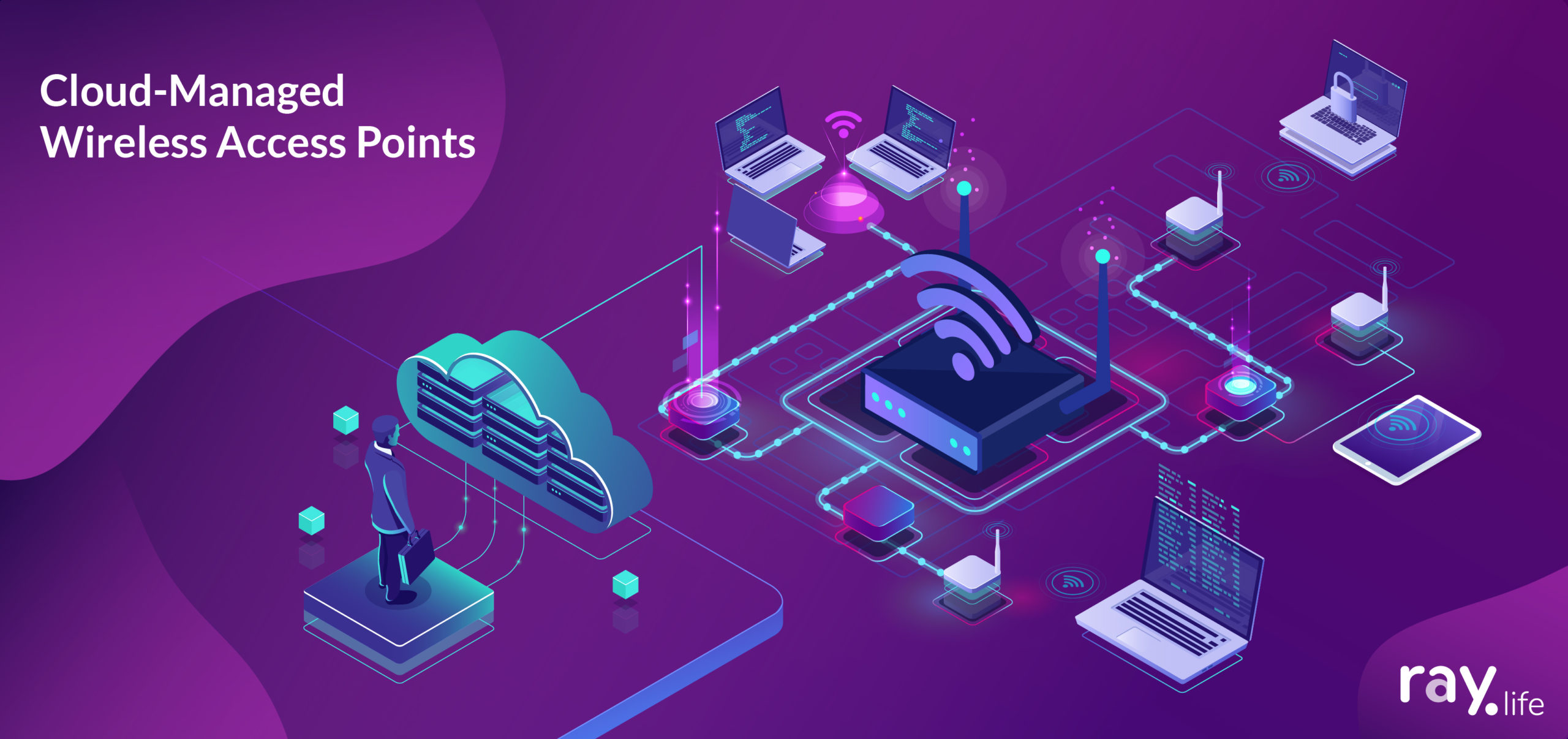How Cloud-Managed Wireless Access Points Are Changing Networking
In the rapidly evolving landscape of technology, networking solutions must adapt to an increasing number of connected devices and ever-growing demands for speed, reliability, and security. Traditional networking methods often struggle to keep pace with these challenges, prompting organizations to seek more efficient and future-proof solutions. Enter cloud-managed wireless access points (WAPs) – a groundbreaking approach that is literally changing the way networks are designed, managed, and maintained. This innovative technology allows businesses to take advantage of the robust capabilities of cloud computing, defining a new era in networking.
Cloud-managed wireless access points operate on the principle of centralized management through cloud-based platforms. This means that all network configurations, updates, and monitoring can be executed from a single dashboard, accessible from anywhere, at any time. The significance of this capability cannot be overstated, as it not only simplifies network management but also enhances overall performance and provides greater visibility into operational metrics. Companies can streamline their IT operations, reducing the burden on their technical teams while simultaneously improving network reliability and user experience.
The importance of cloud-managed WAPs extends beyond just convenience; they offer scalable solutions tailored to diverse organizational needs. Whether a small business is looking for a straightforward configuration or a vast enterprise requires intricate networking specifications, cloud-managed systems can adjust accordingly. This flexibility empowers organizations to evolve with changing technological landscapes without significant investments in hardware or infrastructure. As connectivity becomes a cornerstone for both small and large enterprises, understanding how these devices function and benefit networking is paramount.
This article dives into how cloud-managed wireless access points are revolutionizing networking, emphasizing their features, advantages, deployment mechanisms, and potential challenges. As we further explore the significance of this technology, we aim to equip readers with the knowledge necessary to leverage cloud-managed solutions effectively – turning them into valuable assets in the digital age.
The Features of Cloud-Managed Wireless Access Points
Cloud-managed wireless access points come equipped with a suite of features that differentiate them from traditional access points. The hallmark of cloud management is centralized control, which allows IT administrators to configure and manage multiple access points via a single, user-friendly interface. This centralization simplifies the process of deploying, monitoring, and maintaining a network, making it easier to manage a large number of devices spread across various locations. The ability to apply changes and updates from the cloud means that organizations can ensure they are consistently operating with the latest software versions without needing to physically access each device.
Another defining feature of cloud-managed WAPs is their ability to provide real-time analytics and monitoring capabilities. These access points collect and send data about network performance, user behavior, and resource allocation to cloud servers, enabling administrators to gain insights that can inform strategic decisions. For example, network usage patterns can be analyzed, revealing peak usage times, bandwidth-heavy applications, and even potential security vulnerabilities. With this data at their fingertips, IT teams can proactively address issues before they escalate, ultimately enhancing user experience and reducing downtime.
Cloud-managed WAPs also offer significant capabilities in terms of scalability and flexibility. As businesses grow or change, their networking needs will inevitably evolve. Cloud-managed solutions facilitate easy scaling without the need for extensive hardware investments or overhauling existing infrastructure. Adding new access points is simply a matter of plugging them in and configuring them through the cloud interface. This level of scalability ensures that organizations can adapt to market demands rapidly and efficiently while maintaining robust connectivity across locations and devices.
Benefits of Cloud Management in Networking
The benefits of cloud-managed wireless access points extend beyond mere convenience and flexibility. One of the most impactful advantages is cost efficiency. Organizations can significantly lower their operational costs by reducing the need for dedicated on-site IT resources. Cloud management enables remote troubleshooting, configuration, and updates, allowing technical teams to resolve issues without being physically present. As a result, businesses can allocate resources more strategically and focus on key operational priorities rather than getting bogged down in routine network maintenance.
Security is another critical area where cloud-managed WAPs shine. As cyber threats become increasingly sophisticated, maintaining a secure network is vital for any organization. Cloud-managed systems typically come with integrated security features that protect against unauthorized access and potential breaches. These solutions can automatically apply security updates, ensuring that the WAPs are fortified against emerging threats without requiring manual intervention from IT staff. Additionally, robust encryption protocols and identity management capabilities help safeguard sensitive data and user information.
The data-driven approach enabled by cloud management also enhances decision-making processes for companies. The real-time insights and performance metrics gathered by cloud-managed WAPs allow businesses to identify trends, uncover anomalies, and refine networking strategies. Decisions regarding bandwidth allocation, resource distribution, and user access can be informed by empirical data rather than assumptions, leading to more effective networking solutions. In this respect, cloud-managed access points not only provide connectivity but also contribute to informed decision-making that directly supports business goals.
Challenges and Considerations in Cloud-Managed Systems
While cloud-managed wireless access points bring numerous benefits, organizations must also consider the potential challenges associated with their implementation. One significant aspect is reliance on internet connectivity. Since cloud-managed systems require a constant internet connection to function optimally, any disruptions in connectivity can hinder management capabilities and affect the user experience. Therefore, businesses must ensure they have reliable internet access and consider backup systems for critical operations to mitigate this risk.
Additionally, organizations must address concerns regarding data privacy and security. With data being transmitted to and stored in the cloud, there is an inherent risk of unauthorized access or potential breaches. Companies must conduct thorough assessments of the cloud provider’s security protocols, compliance with regulations, and overall reliability to protect sensitive information. Implementing strong access controls and encryption measures can help reduce vulnerabilities and keep data safe.
Finally, establishing a successful cloud-managed network may require a cultural shift within the organization. Employees and IT personnel must embrace new technologies and management practices, which can sometimes meet resistance. It is crucial to invest in training and educational initiatives that foster understanding and facilitate seamless transitions to cloud-managed systems. Alongside the necessary technical infrastructure, creating a culture that supports innovation and adaptability is vital for maximizing the potential benefits of cloud management in networking.
Conclusion
Cloud-managed wireless access points are undeniably transforming networking as we know it, offering organizations unprecedented levels of control, efficiency, and scalability. By centralizing network management in the cloud, businesses can minimize operational costs, enhance security protocols, and improve overall network performance. The data-driven insights available through cloud-managed systems enable organizations to make informed decisions that drive productivity and support growth in an increasingly connected world.
The advent of cloud-managed WAPs also presents unique advantages in ensuring timely updates and security patches—an essential aspect of maintaining network integrity amidst an ever-evolving threat landscape. However, organizations must remain vigilant, addressing potential challenges such as internet reliability and data privacy concerns. By undertaking comprehensive evaluations of cloud solutions and implementing robust security measures, businesses can harness the full potential of cloud-managed networking while safeguarding critical operational assets.
As the digital landscape continues to unfold, the significance of cloud-managed wireless access points will only magnify. The flexibility, control, and insights brought by these systems provide organizations the necessary tools to navigate the complexities of modern networking. Embracing cloud management not only prepares businesses for current connectivity challenges but also lays the foundation for future growth and innovation. Through strategic investments in cloud-managed networking solutions, organizations can cultivate an agile and resilient infrastructure that meets the demands of today and tomorrow while fostering a secure and efficient digital environment. The journey toward improved networking continues, driven by the transformative impact of cloud-managed wireless access points, positioning organizations to thrive in a connected world.




